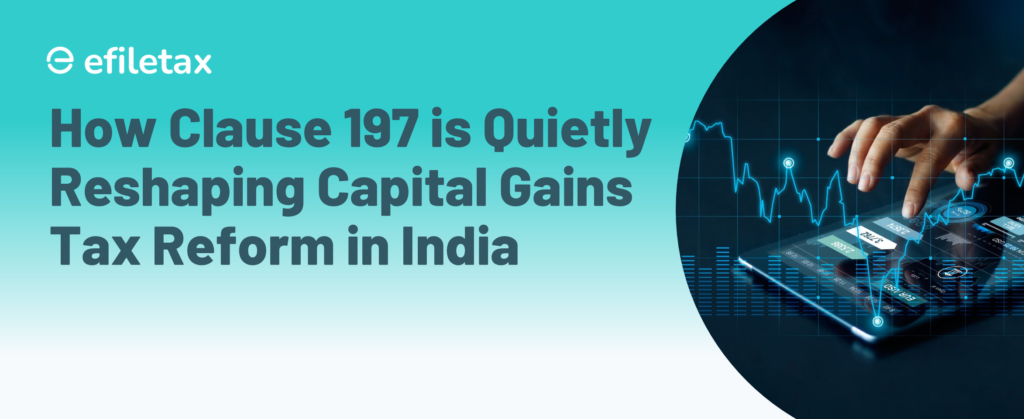
Capital Gains Tax Reform: Clause 197 vs Section 112
The focus keyphrase “capital gains tax reform” signals a major shift under the Income Tax Bill, 2025, particularly through Clause 197. This new clause is set to replace Section 112 of the 1961 Act, impacting how long-term capital gains (LTCG) are taxed in India.
Let’s break it down.
What is Clause 197 of the Income Tax Bill, 2025?
Clause 197 simplifies and restructures the taxation of long-term capital gains:
- Continues the 20% tax rate for most LTCG
- Keeps 10% tax (without indexation) on equity-oriented investments exceeding ₹1 lakh
- Unifies definitions and removes overlapping clauses
- Introduces a “cost inflation index” schedule as part of the main Act, not as a side notification
📌 Clause 197 aims to provide structural clarity and reduce litigation.
How does Section 112 of the Income-tax Act, 1961 differ?
- Taxed LTCG at 20% with indexation
- Applied 10% tax on listed securities without indexation if gains exceeded ₹1 lakh
- Depended heavily on periodic notifications for indexation, causing ambiguity
- Interpretation varied across case laws and assessment years
Comparison Table: Clause 197 vs Section 112
| Feature | Clause 197 (2025 Bill) | Section 112 (1961 Act) |
|---|---|---|
| Rate | 20% | 20% |
| Equity LTCG > ₹1 lakh | 10% (no indexation) | 10% (no indexation) |
| Cost Inflation Index | Included in Schedule | Not part of the Act |
| Complexity | Simplified | Often litigated |
| Notifications | Reduced reliance | Frequent & scattered |
Legal References & Clarifications
- 📄 Budget Speech 2025: Reiterated no change in LTCG tax rates, but committed to structural reforms.
- 🏛️ Finance Bill, 2025 – Clause 197: Replaces Section 112; restructures capital gain chapters for clarity.
- 🧑⚖️ CBDT Circulars & Tribunal rulings: Have consistently emphasized the need for codified cost indexation.
Expert View: Why This Matters
“By embedding the cost inflation index in the Act itself, Clause 197 removes discretion, ensuring uniformity in assessments across jurisdictions,” says a senior tax consultant.
This is a compliance booster for both salaried investors and consultants handling capital gains.
✅ Key Takeaways for Taxpayers
- No change in rate, but clearer computation method
- Cost inflation index is now legally codified
- Helps in pre-filing estimations and reduces scope for errors
- Especially useful for mutual fund investors, real estate sellers, and HNI portfolio exits
📣 Efiletax Can Help
Confused about how capital gains tax reform affects your return?
📲 Let our experts file your capital gains tax correctly under the new law.
40-Word Snippet for Google:
Clause 197 of the Income Tax Bill 2025 replaces Section 112, streamlining long-term capital gains tax. It keeps rates unchanged but codifies indexation, reduces ambiguity, and simplifies compliance for investors and tax professionals in India.
FAQs: Capital Gains Tax Reform
Q1. Is LTCG tax rate changing in 2025?
No. The tax rate remains the same—20% with indexation, 10% without for equities.
Q2. What’s the biggest benefit of Clause 197?
It codifies the cost inflation index in the Act itself, reducing reliance on yearly notifications.
Q3. Who benefits the most from this change?
Real estate sellers, mutual fund investors, and consultants handling large portfolios.